EXPANDED PINO DONAGGIO SOUNDTRACK AVAILABLE NEXT WEEK
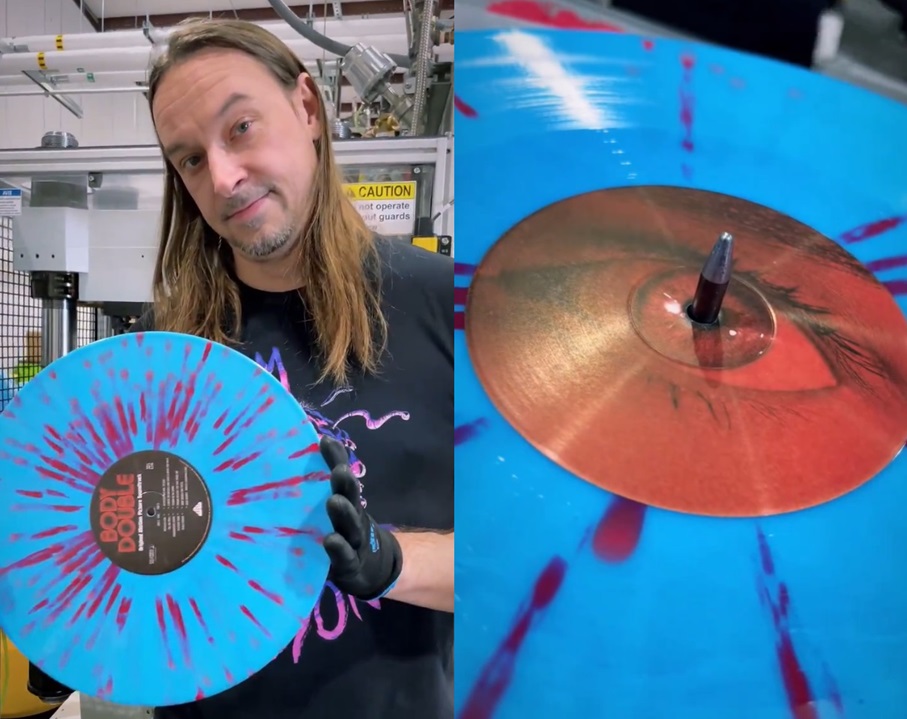
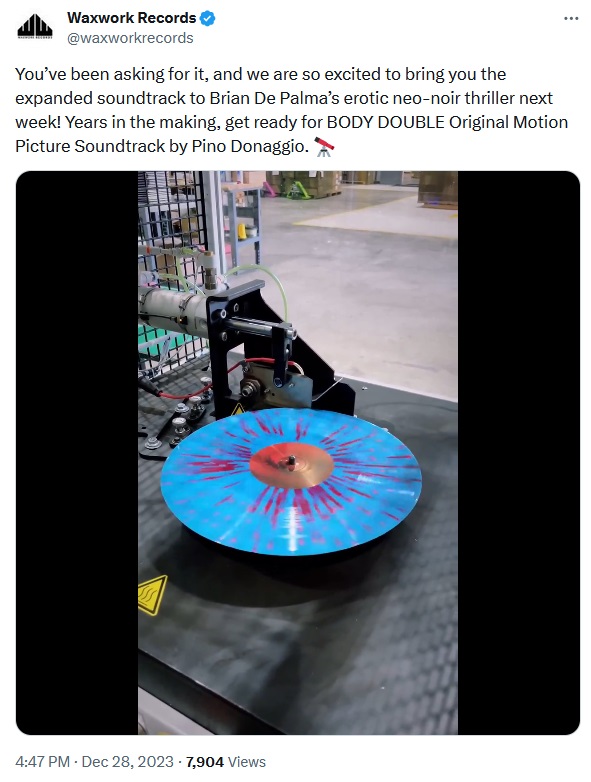
 Hello and welcome to the unofficial Brian De Palma website. Here is the latest news: |
|---|
E-mail
Geoffsongs@aol.com
-------------
Recent Headlines
a la Mod:
Listen to
Donaggio's full score
for Domino online
De Palma/Lehman
rapport at work
in Snakes
De Palma/Lehman
next novel is Terry
De Palma developing
Catch And Kill,
"a horror movie
based on real things
that have happened
in the news"
Supercut video
of De Palma's films
edited by Carl Rodrigue
Washington Post
review of Keesey book
-------------
Exclusive Passion
Interviews:
Brian De Palma
Karoline Herfurth
Leila Rozario
------------
------------
| « | December 2023 | » | ||||
| S | M | T | W | T | F | S |
| 1 | 2 | |||||
| 3 | 4 | 5 | 6 | 7 | 8 | 9 |
| 10 | 11 | 12 | 13 | 14 | 15 | 16 |
| 17 | 18 | 19 | 20 | 21 | 22 | 23 |
| 24 | 25 | 26 | 27 | 28 | 29 | 30 |
| 31 | ||||||
De Palma interviewed
in Paris 2002
De Palma discusses
The Black Dahlia 2006

Enthusiasms...
Alfred Hitchcock
The Master Of Suspense
Sergio Leone
and the Infield
Fly Rule
The Filmmaker Who
Came In From The Cold
Jim Emerson on
Greetings & Hi, Mom!
Scarface: Make Way
For The Bad Guy
Deborah Shelton
Official Web Site
Welcome to the
Offices of Death Records

Following CBS' cancellation of The Smothers Brothers Comedy Hour, Get To Know Your Rabbit was to be a Hollywood star vehicle for Tom Smothers. De Palma, fresh off the counterculture success of independent films such as Greetings and Hi, Mom!, was hired by Warner Bros. to direct the film. However, De Palma had run afoul of the studio when he suggested a new ending which would see Smothers' tap-dancing magician superstar escape the dual traps of conformity and commodification by appearing to make a bloody mess of a live rabbit on the Tonight Show with Johnny Carson. Smothers became unsure about De Palma's direction, and since the whole project was conceived as a vehicle for the star, De Palma was locked out. Despite the compromised vision, though, what remains in the bulk of the film is a comedy that flows with De Palma's sardonic sense of the absurd, as a continuation of the countercultural indifference on display in Greetings and Hi, Mom!. The film, made in 1971, sat on a shelf until Warner Bros. dumped it into theaters, of ten as part of a double bill, beginning in 1972 and into 1973.

In his commentary at Trailers From Hell, Larry Karaszewski states that at the time Get To Know Your Rabbit was made, "Tommy was one of the hippest people on Planet Earth."
Here's more from Mike Barnes' obituary at The Hollywood Reporter:
The Smothers Brothers Comedy Hour ran from February 1967 until April 1969, when the pair were fired after 72 episodes (and with their show in the top 10 and already renewed for a fourth season). Up against NBC powerhouse Bonanza at 9 p.m. on Sunday nights, their program succeeded by attracting younger, hipper, more rebellious viewers — while also launching the careers of Steve Martin, Rob Reiner, Bob Einstein, Mason Williams and many others.Clean-cut and sporting closely cropped hair in an era of Easy Rider and acid trips, the former folk singers and makers of hit music-comedy records did not look like the kind of guys who would be lightning rods for controversy.
“Their antics turned television upside down, blending slapstick humor with political satire, making them comedic heroes who blazed the trail followed today by satirists such as Jon Stewart, Stephen Colbert and Samantha Bee,” Marc Freeman wrote in his introduction to an oral history of The Smothers Brothers Comedy Hour that was published in November 2017.
“It was the first show to deal with the White House, Congress, war, counterculture, drugs, civil rights,” Dick noted in the piece. “We were the first in and first out. We made comedy for TV relevant and not just escapism. We nailed it.”
Comedian David Steinberg did religious sermons that stirred up controversy. David Frye impersonated President Nixon as a buffoon. Censors killed many skits (including one about censors written by Elaine May) and changed the language in others, though clever references about drugs sometimes got through. Pat Paulsen, one of the show’s regulars, ran for president in 1968 in a spoof of national politics.
CBS also pre-empted one episode with a rerun and yanked performances of Pete Seeger’s anti-Vietnam War song “Waist Deep in the Big Muddy” (he was allowed to sing it a year later) and Harry Belafonte‘s “Don’t Stop the Carnival,” which featured a video collage of the riots at the 1968 Democratic National Convention.
“When we tried something and were told ‘no,’ I wanted to know why,” Tom said. “Why is content controversial, putting in something real, something with meaning? I couldn’t understand why that would be an issue. And when it became one, I became extra stubborn.”
At the time, the Nixon administration had put the FCC on notice to watch for content it deemed inappropriate. After CBS banished the brothers, they filed a lawsuit against the network for breach of contract and copyright infringement. They won a settlement of about $900,000 but never regained their clout.
“Dickie and I always get pissed off when people say we were canceled,” Tom said. “We were fired. Death can come in two ways, natural causes and murder. We were murdered.”
The show won an Emmy for writing after its demise, with Martin, Einstein, Williams, Lorenzo Music and Allan Blye among those sharing the honor. Tom and Dick, meanwhile, were nominated for outstanding variety or musical series but lost out to Rowan and Martin’s Laugh-In.
At the 2008 Emmys, Martin presented Tom with a special award, and the pair entered the TV Academy Hall of Fame two years later. A 2002 documentary, Smothered, detailed their duel with CBS.


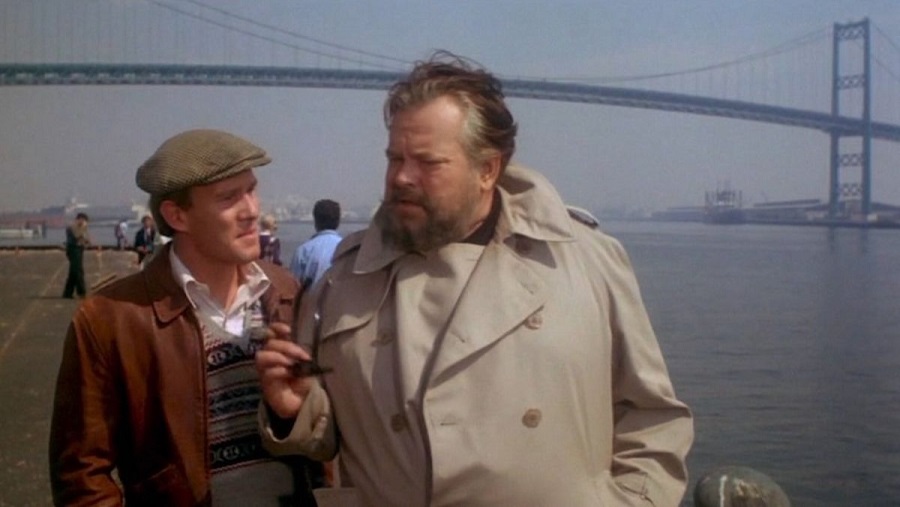


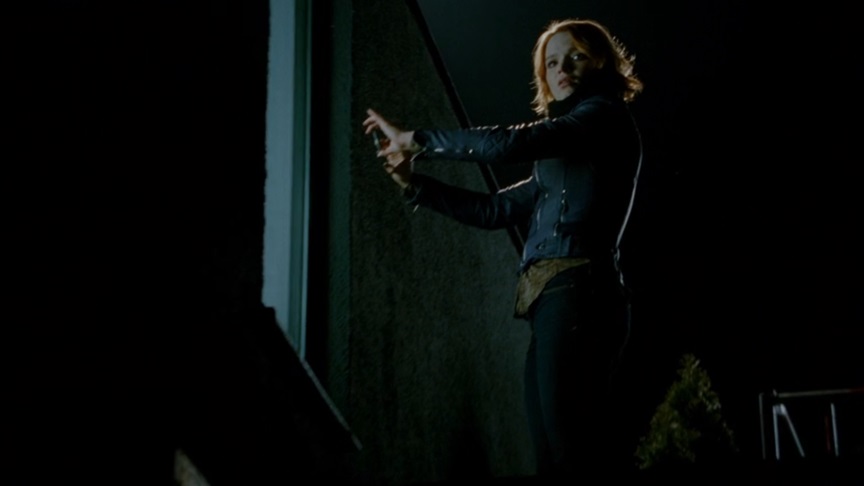
Voyeurism and the methods used in recording voyeurism have long been prominent themes in De Palma’s work. Throughout his five-decade filmography, the director has documented the advancements in how technology can be used voyeuristically as film moved to video, and analogue moved to digital. Passion begins with a large close-up of the Apple logo, seen on the back of a MacBook Pro laptop screen, as Christine and Isabelle watch a promotional video clip. Rather than merely being product placement, this detail is used not just to ground the film specifically in the present time but also to anticipate that social media technology in its various forms is going to be an essential thread woven throughout the narrative. Whereas Crime d’amour only vaguely illustrates the business that Christine and Isabelle are working in, Passion brings it to the foreground. The characters now work for an advertising agency and their latest assignment is the marketing of a smartphone. The “Ass Cam” clip that Isabelle creates for this purpose is modelled after a real web video that De Palma discovered during his research for the picture. The original clip was posted online unbranded and was seemingly created for fun by two attractive young women. It was later revealed that they were actually actors and the video is part of a Levi’s jeans marketing campaign.This type of technology later becomes very important in Passion as it is self-servingly employed by several characters to discredit the film’s only sympathetic character, Isabelle. In a series of particularly difficult-to-watch sequences, Christine coaxes her into a breakdown. After discovering that Christine has video footage of her and Dirk having sex, Isabelle leaves her office in a fragile state and crashes her car in the office car park. This incident is the final straw for her and she collapses weeping and screaming. This intensely private moment is captured on security camera and Christine plays the footage at a crowded work gathering. While Isabelle tries to hold onto her dignity, Christine mockingly says: “This really hurt you, didn’t it? I’m so sorry, I just thought we could laugh together“.
Further into the story, Isabelle discovers that her assistant Dani followed her movements on the night of the murder and captured everything on her video phone. In due course, the clearly unhinged Dani intimidates Isabelle into a sexual relationship in return for keeping the footage from the police. By being abused, humiliated, manipulated and blackmailed with technology that is readily available to anyone, Isabelle is a thoroughly modern film noir heroine for the 21st century.
Since Passion centres on rivalry within an enclosed business world milieu, De Palma forgoes the more elaborate camera movements and spacious use of exteriors often associated with his work to focus on the restricted interior spaces that the characters inhabit. Most of the drama unfolds within the confines of the workplaces, living quarters and social events that Christine and Isabelle frequent. To reflect these stylish environments, the cinematography of José Luis Alcaine is crisp in texture and muted in its carefully selected colour scheme. Replete with glass and reflective surfaces, the imagery possesses a steely quality that many reviewers have mistaken for HD, but it was in fact shot on 35mm. This coldness is further enhanced by blue being the predominant colour, creating a deceptive feeling of calm and order beneath the shiny veneer. Reds are sparsely used but dazzlingly intense and aggressive when they erupt as ruby lipstick or stylish designer stilettos, all signifiers of antagonism in workplace warfare. With this aesthetic and De Palma’s rigid precision of blocking, the framing feels clinical and ultimately imbues this cutthroat domain with claustrophobia.
De Palma has a masterful ability to fill a frame with multiple visual elements, yet he can still balance conveying essential narrative information with details that enrich the film as a whole. His use of the split diopter lens, which allows for the image to display separate depths of field in one shot, is relatively restrained in Passion yet is subtly effective in what it achieves. In one sequence there are three points of focus in a single shot. Dirk lies in bed smoking a cigarette. He is framed in the foreground on the left hand side. In the background, Isabelle stands in the bathroom with her back to the camera. Isabelle’s face is reflected in a large mirror, while other ornamental objects are either situated on the bathroom counter or seen as reflections in the mirror from the other side of the room. In the dialogue exchange between the two characters, Isabelle learns more about Dirk’s relationship with Christine, and discovers Christine’s adventurous sex life which includes a variety of sex aids including a strap-on and a Venetian carnival mask modelled on her own features. This sequence runs a little over two minutes, but within this limited amount of time De Palma conveys the interior design of Dirk’s home which reflects aspects of his personality (an ornament shaped like a penis, a sculpture of an obedient dog), Dirk’s contemptuous attitude towards Christine (“Whatever Christine wants, she gets“), Isabelle’s inquisitive nature (“What’s it like with her?” she asks before rooting through a drawer full of sex aids), and the toys that Christine uses with Dirk that reflect dominance (the strap-on) and narcissism (the mask).
While the split field diopter is an understated way of including an array of elements within a single image, split screen is a more obviously overloaded technique since it simultaneously presents two frames side-by-side. In Passion there is a seven-minute split screen sequence. The left of the screen depicts Isabelle attending a performance of The Afternoon of a Faun, capturing both her eyes watching this ballet and what is taking place onstage. Throughout the music from the ballet, Prélude à L’après-Midi d’un Faune by Claude Debussy, plays while a male dancer (Ibrahim Öykü Önal) and a female dancer (Polina Semionova) perform on the stage. The set dressing is stark and minimalistic, and both dancers play to the camera throughout, constantly meeting its gaze (and therefore, that of the viewer). De Palma covers most of this performance in wide-shot, but occasionally cuts or zooms into the action for tighter frames. This changing of image size often relates to not just the context of the ballet, but also what is taking place on the right of the screen: the build-up to and eventual murder of Christine. It begins with Dirk drunkenly trying to talk to Christine as dinner guests are leaving her home. She escorts him from the house and comes back to find a note on the door stating ‘Leave the door unlocked, undress, shower, blindfold yourself and come to bed‘. While Dirk attempts to drive his car (but crashes it) and Christine prepares for her mystery guest, a figure (whose point of view is adopted by the camera) enters her home, moves up the staircase, sees Christine checking her appearance in a mirror, then hides behind a door which is ajar. Through it Christine can be seen putting on the blindfold and making her way down the hallway towards the figure. The door opens and Christine is gently shoved up against the wall. A gloved hand pulls away her blindfold and she looks directly into the camera – at her murderer’s face. The split screen display disappears as the film cuts to a shot depicting what Christine sees – her own Venetian mask as worn by this figure. Cutting back to her reaction, Christine’s look of surprise turns to fear as the figure’s other hand produces a knife and slashes her throat. The blood splatters into the camera frame, and the scene ends with a shot of the white mask sprayed with blood.
In displaying two simultaneous passages of action, De Palma allows for a sequence that works purely on an visceral level. A familiarity with Jerome Robbins’ The Afternoon of a Faun ballet is not necessary since the precise editing, audio shifts and changing camera frames achieve a disorientating, yet never confusing, juxtaposition of visual and audible activity. The final split screen moment when the female dancer and Christine are each framed attractively in portrait is unnerving. That both are looking into the camera (therefore making direct eye contact with the viewer), one in the midst of performing a beautiful ballet piece and the other about to face her death, is disarmingly effective. This moment of calm is shattered by the passage from the split screen to a close-up of the Venetian carnival mask, and the Debussy music is abruptly cut short with a sharp sting from Pino Donaggio’s dramatic score.
While the treatment of the material may differ between Crime d’amour and Passion, the first half of both films follow essentially the same storyline before going off in different directions. In Corneau’s film, Isabelle is seen meticulously planning the murder of Christine, planting evidence that initially makes her a suspect but later exonerates her, and ultimately frames Philippe (the original ‘Dirk’ character). Corneau’s picture maintains its poise as a refined chamber piece to the end.
In De Palma’s version of events, Isabelle carries out the crime in the same scheming manner. But Passion withholds the identity of the killer until its final scenes, significantly altering the emphasis of the narrative. To achieve this shift, the director reflects the seemingly fragile emotional state of Isabelle (betrayed, abused, heavily medicated) in the increasingly expressionistic form of the film. Sequences begin to play out as groggy dreams within dreams, or as exaggerated recollections of events experienced but now played out in a nightmarish world of tilted Dutch angles and exaggerated faux-noir shadows. As it is ultimately revealed that Isabelle is not innocent and the whole ‘wrong man’ section was, in fact, deceiving the audience, De Palma transforms the material into a meditation on guilt, and the dream logic becomes even more delirious, replete with doppelgängers, browbeaten detectives and vengeful siblings.


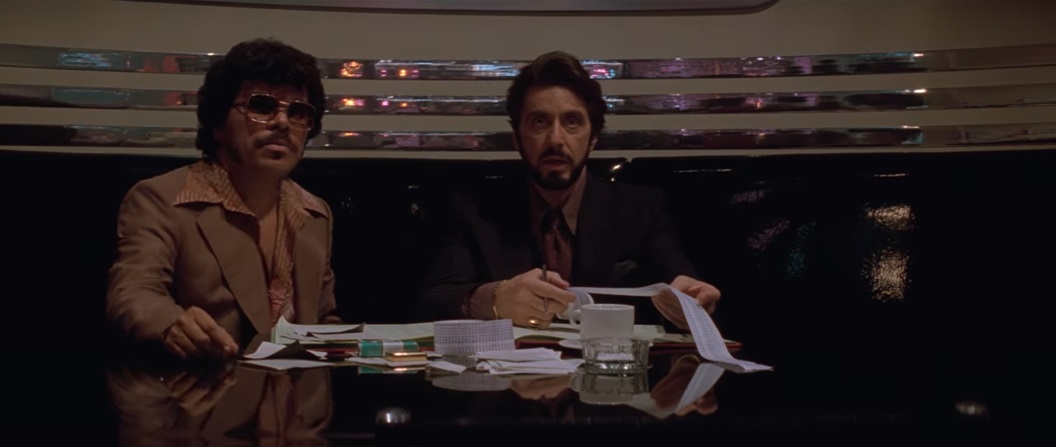
Here's more from Falk's article, in which Guzmán and producer Michael Bregman look back at Carlito's Way, 30 years later:
“To my recollection Al Pacino and Eddie Torres both worked out at the same gym,” explains Michael Bregman, who produced the film alongside his father Martin. “He told Al he had a book, Al read it and I guess Al ran off and tried to make it a bunch of times, but it didn’t work out. And then he gave it to my dad who gave it to me.”The cast was rounded out by Penelope Ann Miller, John Leguizamo (who had to be convinced to do it, even though Benicio Del Toro was super-keen), Viggo Mortensen and Guzman as Carlito’s bodyguard Pachanga, while Sean Penn shocked people thanks to his balding perm as crooked lawyer Dave Kleinfeld.
“Within four minutes of the last shot and the gate being checked, he had walked into the hair and make-up trailer and shaved his own head,” laughs Bregman of Penn. “The AD almost had a heart attack.”
Brian De Palma, who of course had previous with Pacino having directed him in Scarface, was a comparatively late addition to the fold, with Abel Ferrara (Bad Lieutenant) initially attached.
“Abel had just done King of New York,” remembers Bregman. “That movie is stupendous. He’d shown up to meet my dad and I because he’d wanted to do a film about [porn star] John Holmes starring Christopher Walken.”
“He seemed like the right fit [for Carlito’s Way], but the temperament was not going to work at Universal Pictures,” he continues. “Abel’s an outlier and he has a certain way of working. It was a terrible parting of the ways because we’d become friends in the midst of it and then he wasn’t doing the movie and he went bats*** crazy. Then a year or so later we were pals again.”
Guzman recalls being “directed but not really” by Brian De Palma. The director had laughed during his audition, with the star not knowing whether that was a good thing until he arrived back home afterwards to find a message on his answering machine telling him he had the part. On-set, early in his career and keen to impress, the actor would ask the helmer whether he was on the right track and was normally rewarded with little more than a grunt. “He was a man of very few words,” says Guzman.
But for the actor, who had grown up Latino on the Lower East Side of Manhattan, Carlito’s Way felt authentic to his blue-collar upbringing and former career as a social worker.
“Back in those days it was coke, alcohol, a lot of parties. A lot of girls,” he remembers. “We used to go clubbing and then you come back to the neighbourhood and there were these little social clubs. In the back of the social club there was always a pool table. That’s where s*** always started. That’s where I would find the people who exemplified the Pachangas of the world. Those guys were my reference.”
He continues, “The club scenes in Carlito, they were spot on. We had 300 of the best club dancers in New York City. In the holding area, it was like a party going on the whole time. People would bring their boom boxes. Instead of sitting around, it was fifty, sixty couples just dancing.”
Bregman recalls shooting in a pre-Guiliani New York that still reflected the grimier Big Apple of the 1970s when the film was set.
“We were lucky,” he says. “It still hadn’t metamorphosised and you could drop into the barrio and stuff structurally still existed. Subway stations in the outer boroughs still looked they did [20 years previously].”

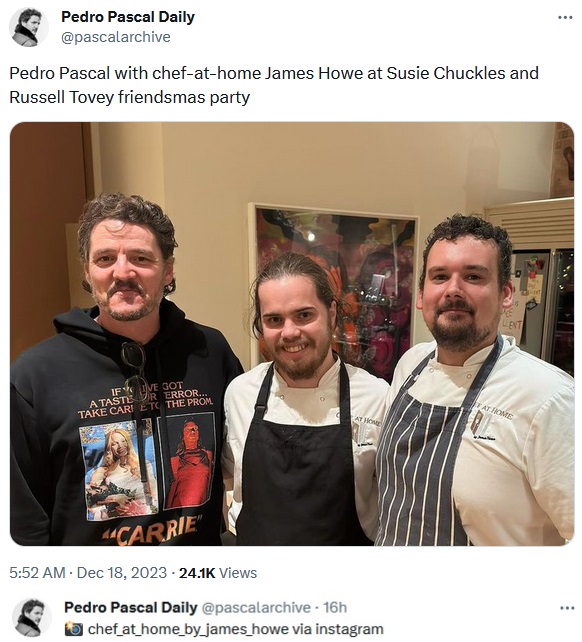
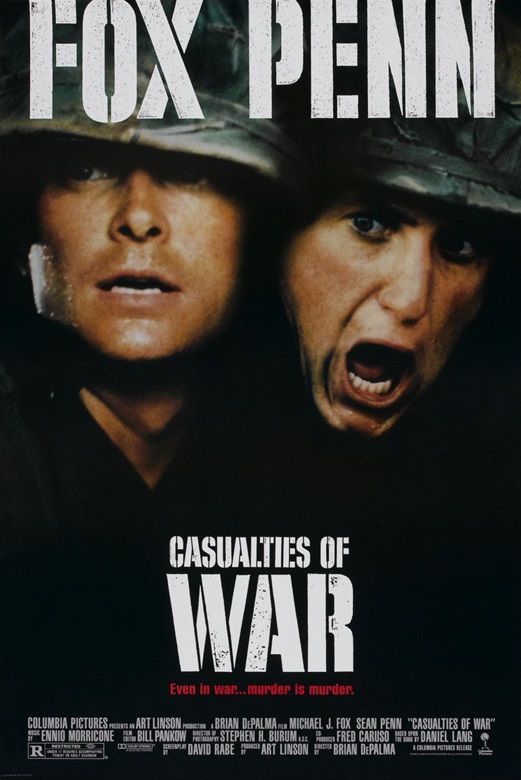

[Brian De Palma] had managed to establish himself as promising, and as a promising director, he was entitled to the polite interest of at least one of the recurrent Hollywood new talent programs. In fact, he spent months sitting around the offices of Universal in New York with Charles Hirsch, the head of the studio's new talent programs. "Out of that frustration," he says, "smoking cigarettes and waiting for someone to return our calls, we came up with the idea for Greetings." Hirsch's title was grander than his power. He had been appointed because Universal thought he knew New York directors, and he might find some bright new filmmaker; but before Easy Rider's success it was hard to persuade the studio to take any of his recommendations seriously. When Greetings was made Universal kept its distance; its basic conservatism had always led it to consider new talent programs much as it would consider charm schools for aspiring starlets: decorative, but not functional. The film was started on 16mm, with $10,000 that Hirsch raised from his parents and from a friend of his parents. "We started to shoot," DePalma remembers, "but there was something wrong with the camera and everything came out a little soft. That took up a whole week of shooting, half our schedule. We looked at the material, and I said to Hirsch: "The worst thing about this is the way it looks. Let's go to 35mm." Fortunately, the laboratory scratched the first material we sent them, all the way through. They felt so badly about it, they gave us the rest of the film and the processing free."The film was made for $43,000; it took in more than $1 million. It brought DePalma general recognition for the first time. With his crew of eight, who were friends and students from New York University, he managed to make a virtue out of the limitations under which he was working. Purely for economy, he used very long takes. These tend to allow improvising actors to maunder on, but they also give the film a loose, episodic character that develops an exhilarating picture of the generation of 1968 and their particular problems and obsessions. Just because it was shot while the worries were real, it has a raw edge that later reconstruction cannot bring. The film's heart is the plan of three friends to help one of them evade the draft, the most immediate problem facing most of the people working on the film at the height of the Vietnam war in 1968. In its three episodes one man has to be kept awake all night so that he can be exhausted in mind and body when he goes before the draft board. The treatment is picaresque, a series of near hallucinatory encounters. In the second section DePalma returns to his constant obsession with the killing of President Kennedy; in a prolonged take he shows a would-be expert on the assassination tracing the path of the bullets across the naked body of his girlfriend. It is a repellent image which captures the weird erotic charge that talk of the Kennedy killing carries in necrophilic radio shows and publications. In the last section DePalma nods to the changes in sexual attitudes: one of his central characters is fascinated by pornography and is inventing a new form of art— peep-art. With all three components put together, sex, assassination, and the draft show a group of young Americans at a point of cultural transition. And they are shown in a context that is real, for Greetings is a street film, where the locations are exact and the extras are actually men who are to be drafted. Greetings becomes a report on the past.
This time the finished film did find a distributor. Frank Yablans saw it. He had not yet climbed his way to Paramount and The Godfather, and he was years away from his role as an independent producer at Twentieth Century-Fox, where he produced DePalma's The Fury. He was working with a small-time New York distributor called Sigma 3, which specialized in the sort of films that played art houses across the country. Yablans was excited by the film. He bellowed at his bosses: "If you don't pick up this film, I'm quitting." And, by himself, he stomped round the country to sell the film. DePalma still remembers his campaign with awe. "Literally," he said, "Yablans went from theater to theater with the print under his arm."
The film made money but DePalma saw little of it. It also won the Silver Bear award at the Berlin Film Festival. It was a critical success that was also marketable, largely on the peep-art sequences.

